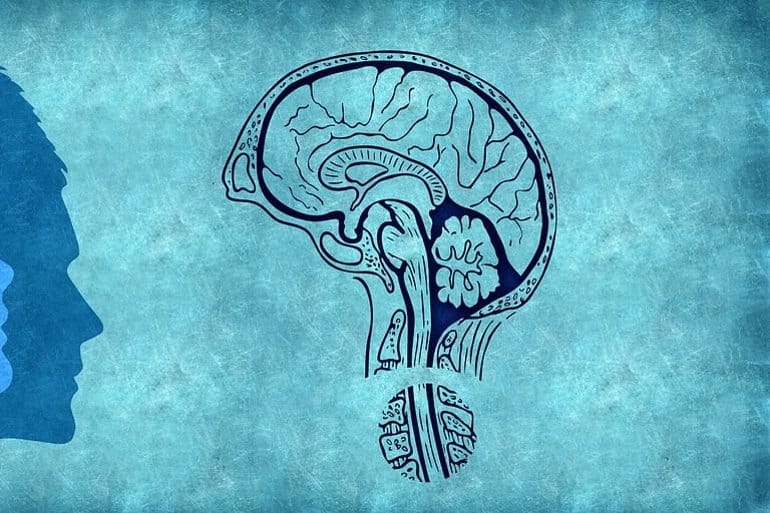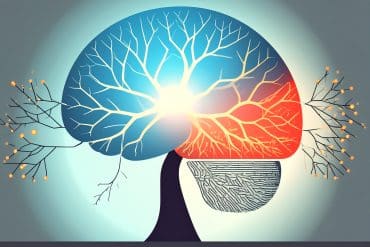Summary: Two hours after ingestion, tiny particles of polystyrene, a widely used plastic commonly used for food packing, can be detected in the brain. These plastic particles can increase the risk of neuroinflammation and neurodegeneration.
Source: University of Vienna
The study was carried out in an animal model with oral administration of MNPs, in this case polystyrene, a widely-used plastic which is also found in food packaging.
Led by Lukas Kenner (Department of Pathology at MedUni Vienna and Department of Laboratory Animal Pathology at Vetmeduni) and Oldamur Hollóczki (Department of Physical Chemistry, University of Debrecen, Hungary) the research team was able to determine that tiny polystyrene particles could be detected in the brain just two hours after ingestion.
The mechanism that enabled them to breach the blood-brain barrier was previously unknown to medical science.
“With the help of computer models, we discovered that a certain surface structure (biomolecular corona) was crucial in enabling plastic particles to pass into the brain,” Oldamur Hollóczki explained.
Researching impact on health
The blood-brain barrier is an important cellular barrier that prevents pathogens or toxins from reaching the brain. The intestine has a similar protective wall (intestinal barrier), which can also be breached by MNPs, as various scientific studies have demonstrated.
Intensive research is being conducted on the health effects of plastic particles in the body. MNPs in the gastrointestinal tract have already been linked with local inflammatory and immune reactions, and the development of cancer.

“In the brain, plastic particles could increase the risk of inflammation, neurological disorders or even neurodegenerative diseases such as Alzheimer’s or Parkinson’s,” said Lukas Kenner, pointing out that more research is needed in this area.
Restrict the use of MNPs
Nanoplastics are defined as having a size of less than 0.001 millimetres, while at 0.001 to 5 millimetres, some microplastics are still visible to the naked eye. MNPs enter the food chain through various sources including packaging waste.
But it is not just solid food that plays a role, but liquids too: according to one study, anyone who drinks the recommended 1.5-2 litres of water per day from plastic bottles will end up ingesting around 90,000 plastic particles a year in the process.
However, drinking tap water instead can – depending on the geographical location – help reduce this figure to 40,000.
“To minimise the potential harm of micro- and nanoplastic particles to humans and the environment, it is crucial to limit exposure and restrict their use while further research is carried out into the effects of MNPs,” Lukas Kenner explained.
The newly discovered mechanism by which MNPs breach protective barriers in the body has the potential to advance research in this area decisively.
About this neuroscience research news
Author: Karin Kirschbichler
Source: University of Vienna
Contact: Karin Kirschbichler – University of Vienna
Image: The image is in the public domain
Original Research: Open access.
“Micro- and Nanoplastics Breach the Blood–Brain Barrier (BBB): Biomolecular Corona’s Role Revealed” by Lukas Kenner et al. Nanomaterials
Abstract
Micro- and Nanoplastics Breach the Blood–Brain Barrier (BBB): Biomolecular Corona’s Role Revealed
Humans are continuously exposed to polymeric materials such as in textiles, car tires and packaging. Unfortunately, their break down products pollute our environment, leading to widespread contamination with micro- and nanoplastics (MNPs).
The blood–brain barrier (BBB) is an important biological barrier that protects the brain from harmful substances. In our study we performed short term uptake studies in mice with orally administered polystyrene micro-/nanoparticles (9.55 µm, 1.14 µm, 0.293 µm).
We show that nanometer sized particles—but not bigger particles—reach the brain within only 2 h after gavage. To understand the transport mechanism, we performed coarse-grained molecular dynamics simulations on the interaction of DOPC bilayers with a polystyrene nanoparticle in the presence and absence of various coronae.
We found that the composition of the biomolecular corona surrounding the plastic particles was critical for passage through the BBB.
Cholesterol molecules enhanced the uptake of these contaminants into the membrane of the BBB, whereas the protein model inhibited it. These opposing effects could explain the passive transport of the particles into the brain.






